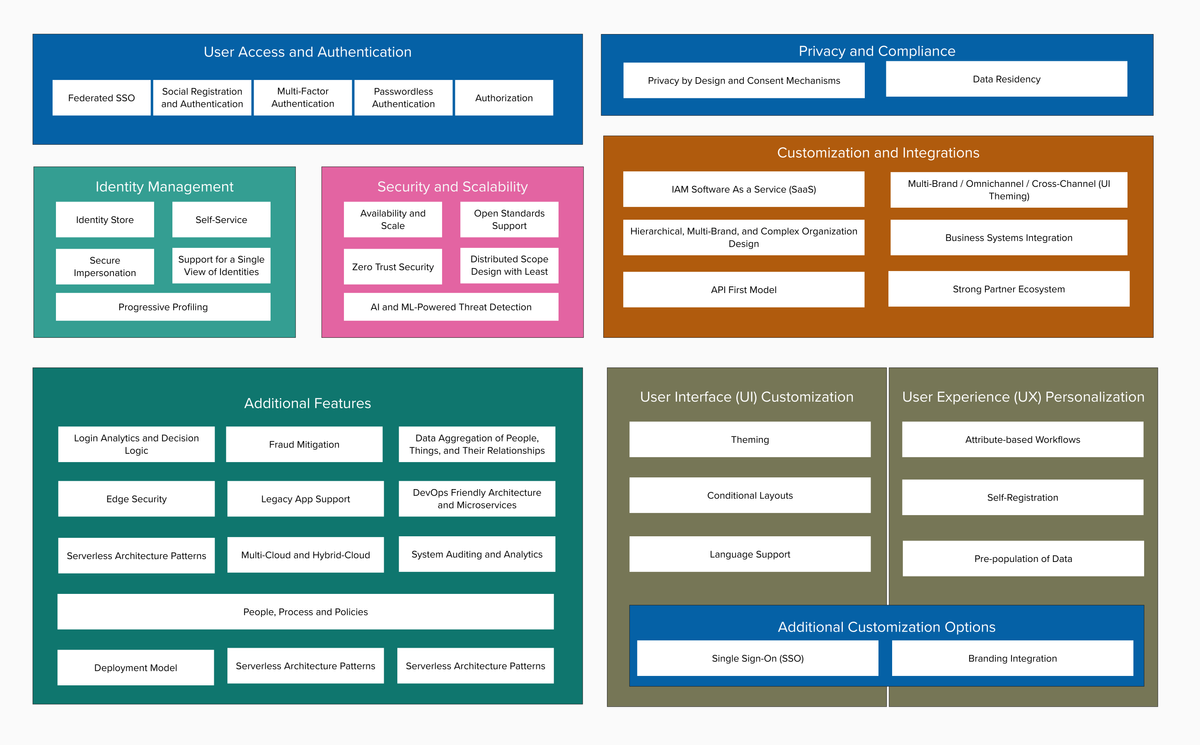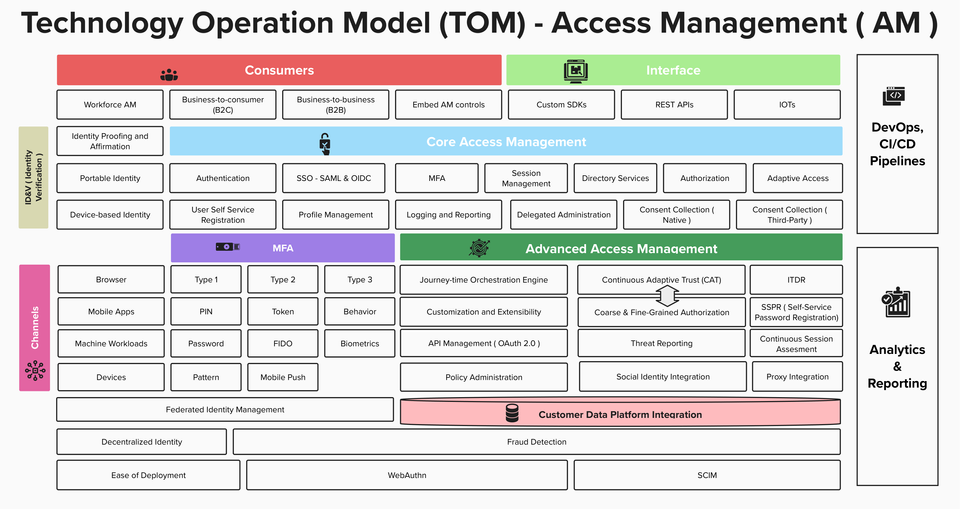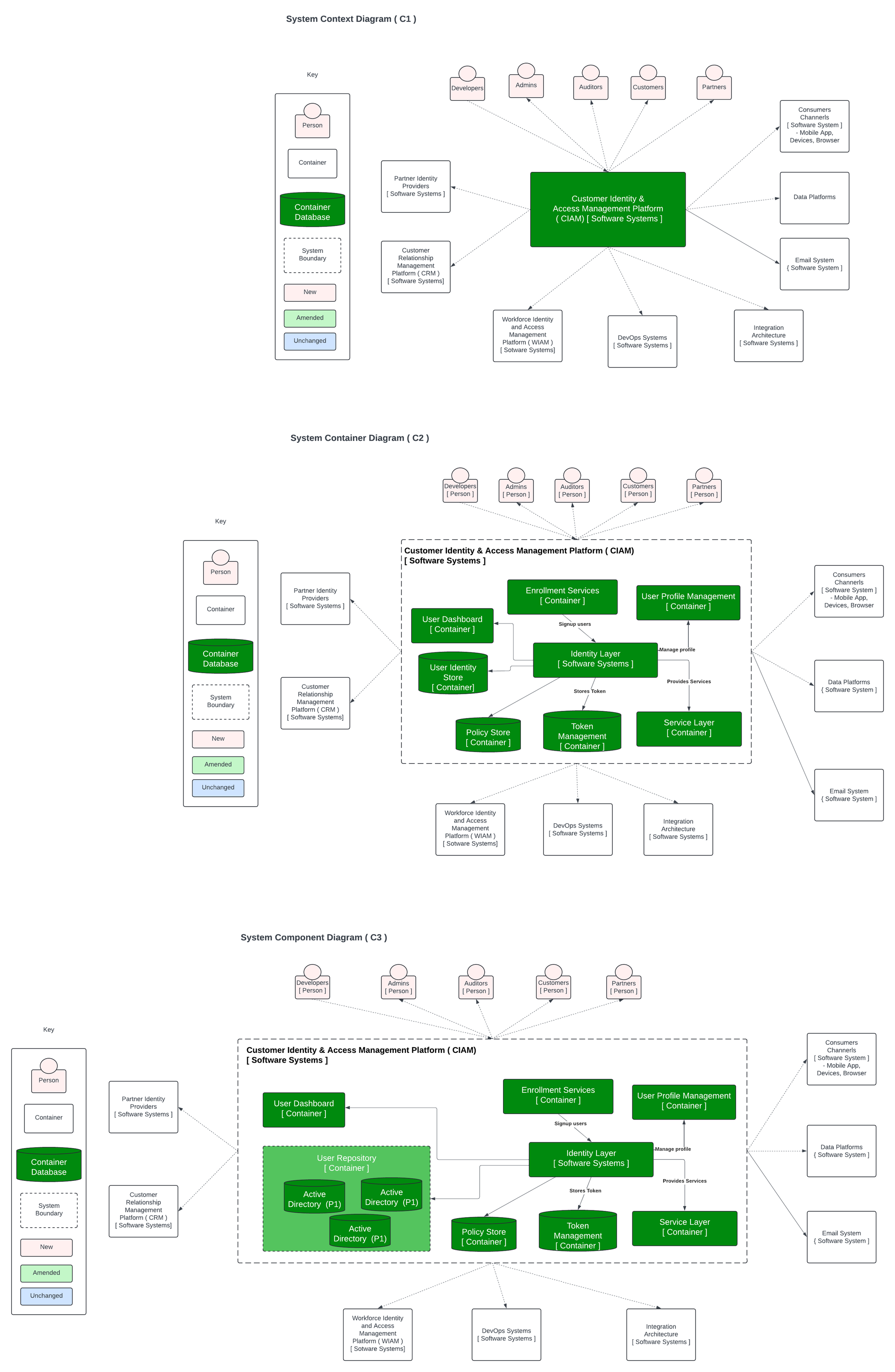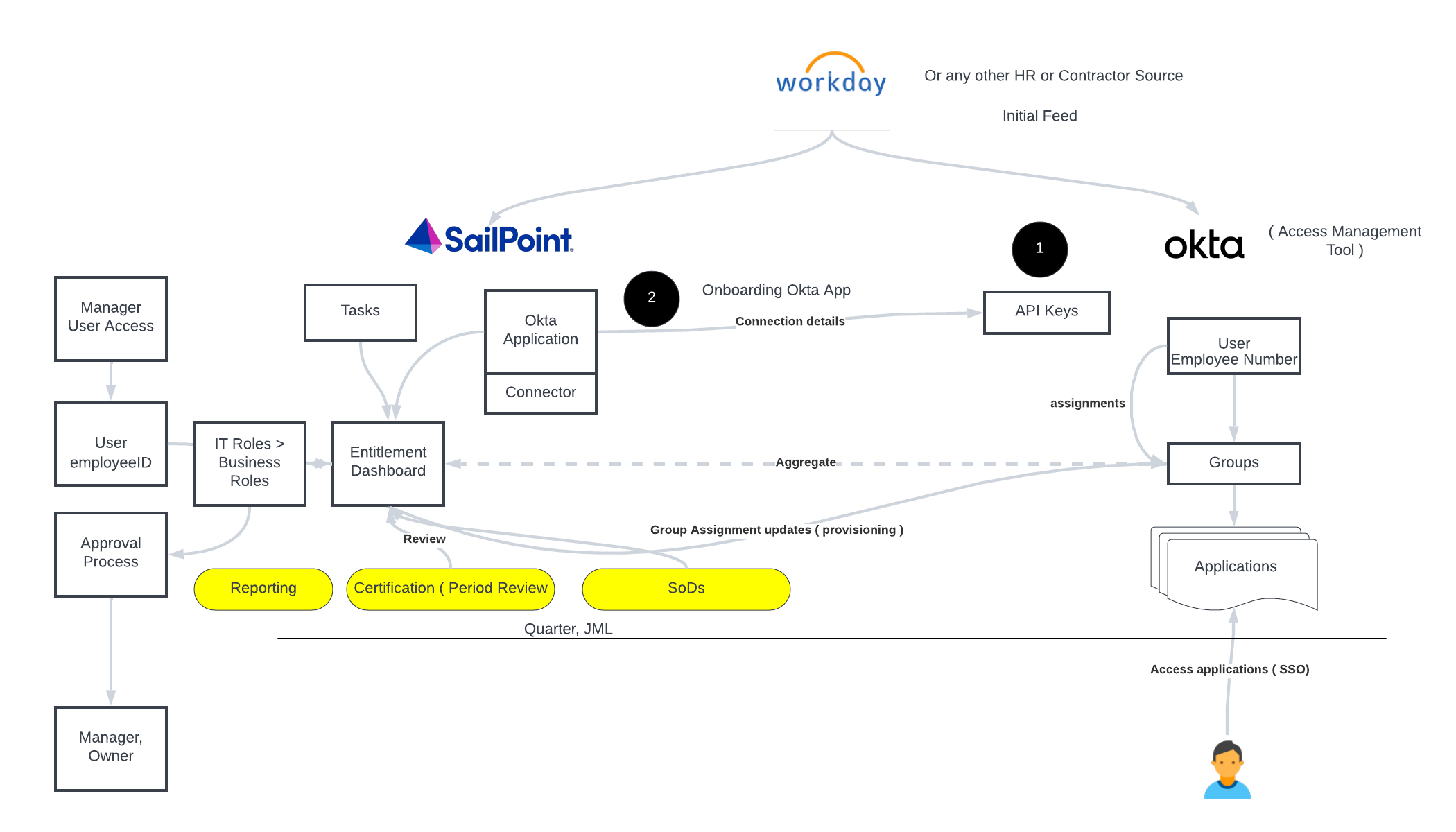Building an Extensive IAM Architecure

Understanding IAM Architecture Features as an IAM Architect
An IAM architect requires a broad understanding of various technical products and features to build a successful IAM system. The diagram you presented likely showcases some of these core functionalities.
Key Features
- Identity Management
- Identity Store: This acts as a central repository for user information like names and emails. It often utilizes directory services like Active Directory.
- Self-Service Registration: This allows users to create their own accounts.
- Access Management: This controls user access to system resources. This can involve Role-Based Access Control (RBAC) or Attribute-Based Access Control (ABAC).
- User Access and Authentication
- Single Sign-On (SSO): This allows users to access multiple systems with a single login.
- Multi-Factor Authentication (MFA): This verifies a user's identity beyond just a password, using security codes or fingerprint scans.
- Federation: This enables user authentication using another organization's ID system.
- Security and Scalability
- Auditing and Analytics: This monitors user activity to identify security issues.
- Failover and Redundancy: This ensures user access even during system outages.
- Threat Detection: This identifies malicious activity.
- Customization and Integrations
- Open Standards: The system should be built using industry standards for seamless integration with various systems.
- APIs: These are Application Programming Interfaces that allow communication with other systems.
- UI/UX Customization: This allows tailoring the system's look and feel to the organization's needs.
IAM Architect Skills
IAM architects require a diverse skillset. Beyond technical expertise, they need to understand business needs and design solutions accordingly. Here are some key skills:
- Understanding of identity management and access control concepts.
- Familiarity with architectures like cloud computing, containerization, and microservices.
- Security best practices.
- Requirements definition and project management.
Conclusion
An IAM architect is responsible for designing IAM systems that are secure, scalable, and meet the organization's specific needs. This requires a comprehensive understanding of various IAM features and the ability to integrate them effectively.



